ADVERTISEMENT
Five-Star Plus+ offensive tackle Jackson Cantell, the No. 1 overall recruit in 2026, committed to Miami over Georgia last week after the Hurricanes reportedly offered quite the deal for him in NIL. David Pollack doesn’t know if that number was worth it, though, even if he is the best in his class. Pollack was critical […]
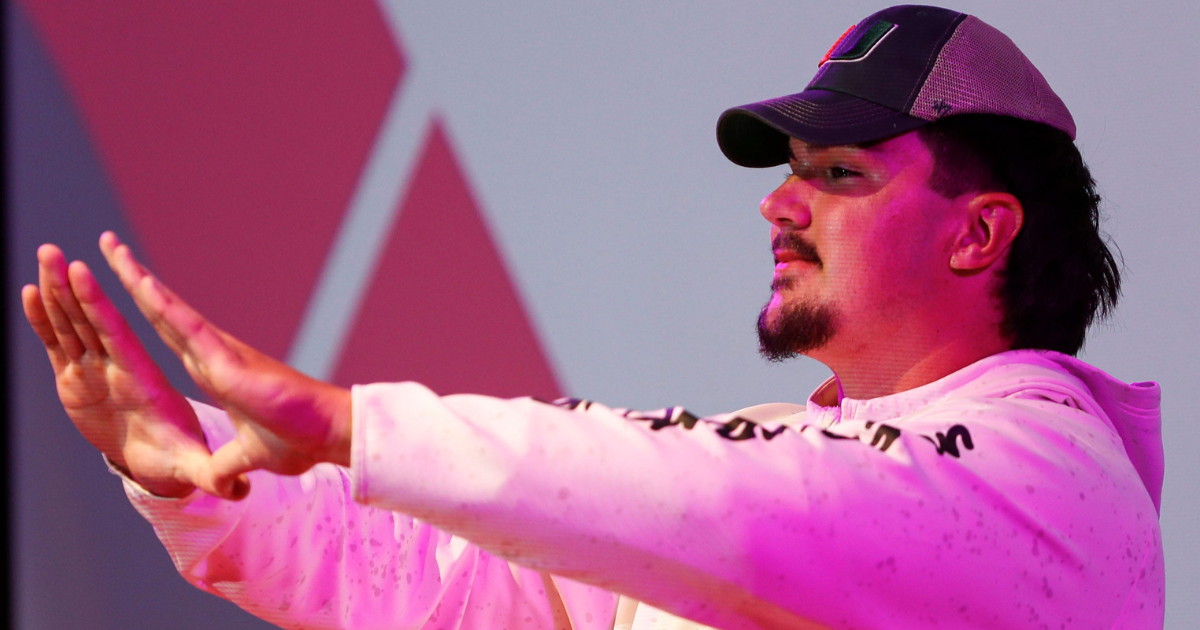
Five-Star Plus+ offensive tackle Jackson Cantell, the No. 1 overall recruit in 2026, committed to Miami over Georgia last week after the Hurricanes reportedly offered quite the deal for him in NIL. David Pollack doesn’t know if that number was worth it, though, even if he is the best in his class.
Pollack was critical of this expense during an episode of ‘See Ball Get Ball’ last week. He knows the value of the offensive line but, at the apparent price point as compared to the rest of the cost of a roster, Pollack isn’t sure if that kind of investment is worth it.
“It ain’t left tackle, homie. Like, it ain’t left tackle. If you want to spend this much money on a quarterback, we can have the conversation. I’m not spending $2 million on an offensive lineman. Like, I’m just not,” Pollack said. “An offensive lineman is obviously going to be in the mix, can be great, can control the game. The likelihood of them getting dinged up and hurt is highly possible. Like, you play a physical position up front like that, you’re going to get – it’s going to happen. Like, it’s just going to happen naturally. Quarterbacks obviously have a chance to stay healthier.
“Obviously, when your line of scrimmage is dominant, it makes life easy for you. I mean, that’s a great thing,” Pollack continued. “So, you know, if Miami has the funds and they can do this? I mean, it’s always at what cost? It’s always, like, where is the next spot that I don’t, that now that I have to fill a void, I have to fill a hole”
Cantwell, a Nixa, Missouri product, is a Five-Star+ prospect at No. 1 in the 2026 cylce per the On3 Industry Ranking, a weighted average that utilizes all four major recruiting media companies. With that, he committed to Miami over Georgia, Oregon, and Ohio State. On3’s Pete Nakos reported Cantwell received an NIL offer in the $2 million range.
Still, Pollack just didn’t know about this fit for Cantwell in Coral Gables. Besides the payment, Pollack also doesn’t know how well Cantwell will develop, considering the program’s recent history with the offensive line under Mario Cristobal.
“Miami, since Cristobal has been there, okay? This is since he’s been there since the 2022 season,” Pollack prefaced. “They have no draft picks in 2022 on the O-line, no draft picks in 2023, a seventh-round pick in 2024, and a fifth-round pick in 2025. So, that’s what you’re telling me that, I’m going to get developed with and I’m going to? It’s not a knock. It’s the numbers. Like, it’s the facts.
“Now, listen. I’m not going to give him all of that because, when you start there, obviously, you’re starting from ground zero, you’re bringing in your own talent. But, because of the transfer portal, you have the opportunity to bring guys in really, really quickly that can play right now that can go and their offensive line has not been,” said Pollack. “Last year, it was pretty solid. Like, it was. They were physical enough to road grade for the run. They protected Cam Ward and Cam Ward made magic. But, you know, those are numbers that are real. Like, those are, Mr. PFF – those are numbers that they have and that they’ve accomplished in his tenure there so far at Miami.”
In the end, all that matters to Miami right now is that Cantwell committed to give the ‘Canes a Top-10 class now for 2026. Still, that price point for that position felt like a lot to Pollack.
“It’s a high investment,” said Pollack. “It’s a high investment in a guy on the offensive line.”
Over the years, the transfer portal and NIL have completely changed the landscape of college sports. The portal has become the professional sports version of free agency, while NIL funds have varied from school to school, something Virginia Tech has found out over time. When it comes to rules and regulations surrounding NIL, fans have […]

Over the years, the transfer portal and NIL have completely changed the landscape of college sports. The portal has become the professional sports version of free agency, while NIL funds have varied from school to school, something Virginia Tech has found out over time.
When it comes to rules and regulations surrounding NIL, fans have been paying close attention and listening to what has been going on with the house settlement, which brings rules regarding NIL and also supplies revenue sharing. It has been taking some time for a ruling to officially come down, and that decision came down late Friday night.
Judge Claudia Wilken officially signed off on the final approval to the proposed settlement.
The case could officially and finally shape college sports forever, and rules regarding NIL, the transfer portal, and revenue sharing. This decision by Judge Wilken all but eliminates concerns going forward, and now it’s up to the schools to go to work.
“Despite some compromises, the settlement agreement nevertheless will result in extraordinary relief for members of the settlement classes,” Wilken wrote in her 76-page final opinion. “If approved, it would permit levels and types of student-athlete compensation that have never been permitted in the history of college sports, while also very generously compensating Division I student-athletes who suffered past harms.”
Athletes will be allowed to be paid by their schools, and each program will be granted just over $20 million to share with athletes across a number of sports. Schools agreed to grandfather the scholarship athletes, which allows athletes to remain and not risk losing their scholarships currently. The NCAA will also pay former athletes $277 million per year over the next 10 years to compensate them for damages.
This decision finally paints a picture of what things will look like going forward, which is what college athletes, coaches, and fans have been waiting for.
The recent announcement on the NCAA settlement paving the way for players to be directly paid by schools has been met with mixed emotions already. Obviously, players who are in line to get a share of the $2.8 billion coffers are quite happy. Georgia fans, however, are looking at it in a different light and […]

The recent announcement on the NCAA settlement paving the way for players to be directly paid by schools has been met with mixed emotions already. Obviously, players who are in line to get a share of the $2.8 billion coffers are quite happy.
Georgia fans, however, are looking at it in a different light and see this as potentially damaging recruiting and roster building, putting unfair shackles on schools who have traditionally led the pack.
Beyond the settlement for former players dating back to 2016, current players can now be paid directly by the school, however there will be a cap on the amount allowed. That could mean that stacking a huge recruiting class of five and four-star players could be a thing of the past.
Some Georgia fans let their feelings be known.
Other fans voiced concern with this new model, calling it “unsustainable”, “damaging to recruiting”, and “forced parity”.
The feelings that this will damage Georgia’s recruiting are probably valid, but Kirby Smart has also been a master at navigating changes in the landscape of college football. His recruiting approach to building relationships, selling being on a winning team over being a big fish in a little pond, and NFL development will need to be adjusted for sure.
While this new system won’t mean the end of titles in Athens, it may bring an end to any one team dominating the sport for an extended period of time. In other words, RIP college football dynasties.
Judge Claudia Wilken announced the approval of the House v. NCAA settlement Friday in the U.S. Northern District of California. It’s a landmark decision that’s likely to usher in a revenue-sharing era among college sports, effectively allowing schools to pay their athletes. The ruling also created a clearinghouse for third-party NIL deals, which will have a say over […]
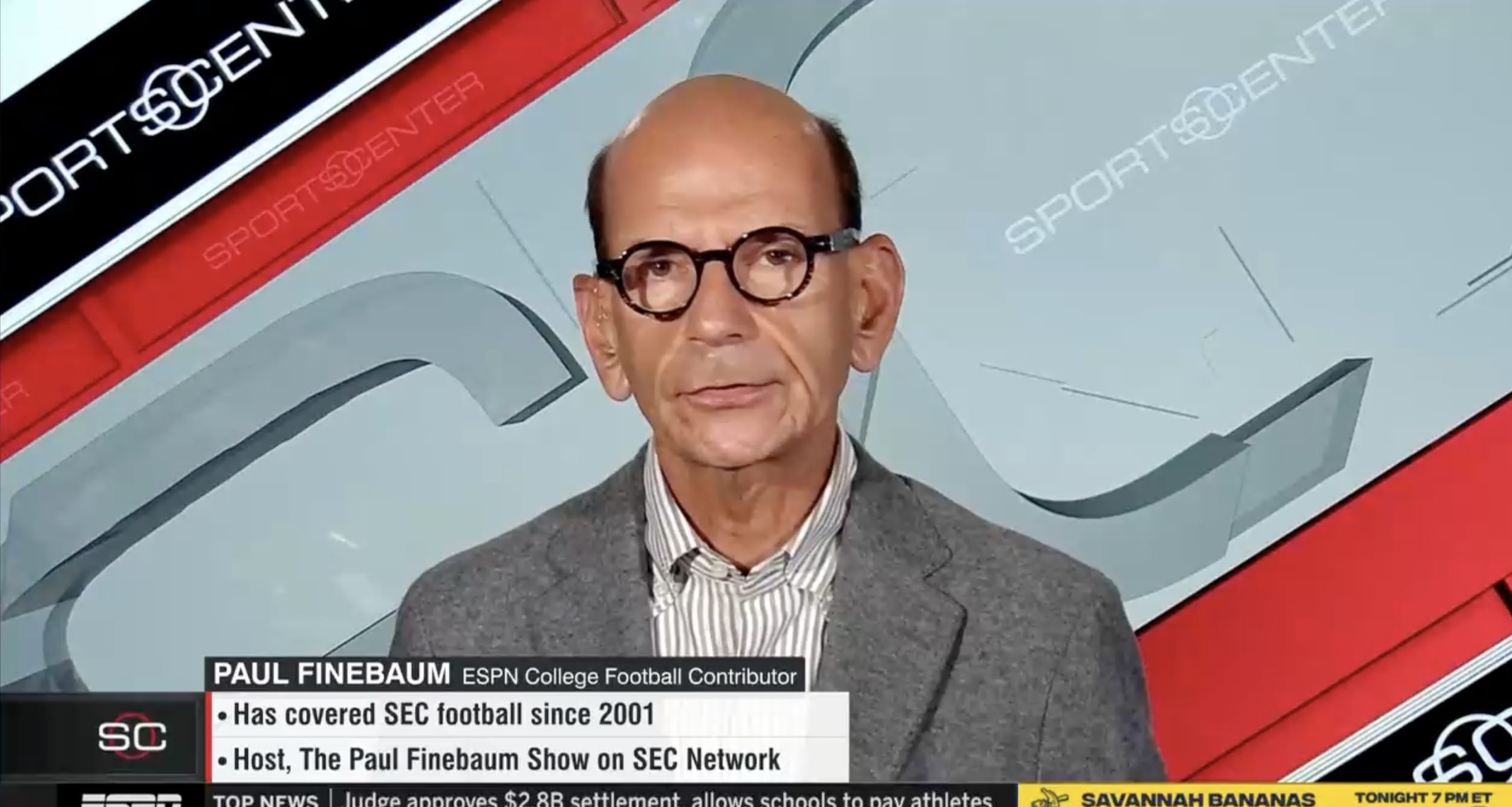
Judge Claudia Wilken announced the approval of the House v. NCAA settlement Friday in the U.S. Northern District of California. It’s a landmark decision that’s likely to usher in a revenue-sharing era among college sports, effectively allowing schools to pay their athletes.
The ruling also created a clearinghouse for third-party NIL deals, which will have a say over NIL arrangements of $600 or more.
“Despite some compromises, the settlement agreement nevertheless will result in extraordinary relief for members of the settlement classes,” Wilken wrote in her 76-page opinion. “If approved, it would permit levels and types of student-athlete compensation that have never been permitted in the history of college sports, while also very generously compensating Division I student-athletes who suffered past harms.”
We still have a long way to go before we fully understand the impact on college sports, especially football. One person who is not optimistic is ESPN and SEC Network host Paul Finebaum.
“I couldn’t help but think back about 10 years ago, when Mark Emmert, then the President of the NCAA, essentially said college athletes will be paid over my dead body. He’s still alive, but the NCAA is dead,” Finebaum said during an appearance on SportsCenter. “It may still be in existence. We’re still having tournaments, such as the Women’s World Series and the Men’s Baseball Tournament, but the NCAA, as we know it, is gone. They literally have no jurisdiction whatsoever other than to be tournament directors.
“This was supposed to level the playing field. Everybody pays the same into the kitty and then divides it up, but it will do anything but. The big will get bigger, and the small schools will simply slip away… Other than maybe in in basketball-only conferences that can use all that money for basketball, as opposed to, like, Alabama and Georgia and Ohio State, where they have to split up $20.5 million.”
Starting July 1, schools will be able to share $20.5 million with its athletes. Football is expected to receive 75%, followed by men’s basketball (15%), women’s basketball (5%) and all remaining sports (5%). Power Four football programs will have between $13 to $16 million to spend on rosters during the 2025 season under the settlement agreement.
Finebaum, known for his devotion to SEC football, views this situation as one that could jeopardize the momentum of women’s sports and non-revenue sports.
“The real casualty of all this, I believe, is going to be the one part of college athletics that has grown so much,” said Finebaum. “We watched the Women’s World Series last night, a million-dollar pitcher, by the way, for Texas Tech. Women’s sports, I think, are going to suffer from this. If you’re one of these Ohio States or Alabamas, and you’re dividing up $20.5 million, you know where most of it’s going, it’s going to football. That’s really a major casualty.
“College athletics did this to themselves. They’re not really suffering for it, because it’s a billion-dollar industry, but it’s going to be very uneven in the future. I think, at some point, fans are going to start tuning out. There’s such an existential threat to what we grew up loving, and we still do. It’s not going to be the same anymore.”
Finebaum is one of several prominent voices who see player compensation as the end of college athletics as we know it. Others might say that’s only fair considering the severe imbalance in profits generated by those institutions on the labors of those players.
College sports are indeed changing and getting more professional. However, they’ve been professional for a long time; the people in charge are only now being forced to acknowledge it.
Associated Press Sydney Moore and Sabrina Ootsburg were surrounded by hundreds of college athletes at AthleteCon when news broke that the $2.8 billion NCAA settlement had been approved by a federal judge. In a room full of college athletes, they felt like the only two people who understood the gravity of the situation. “I’m about […]
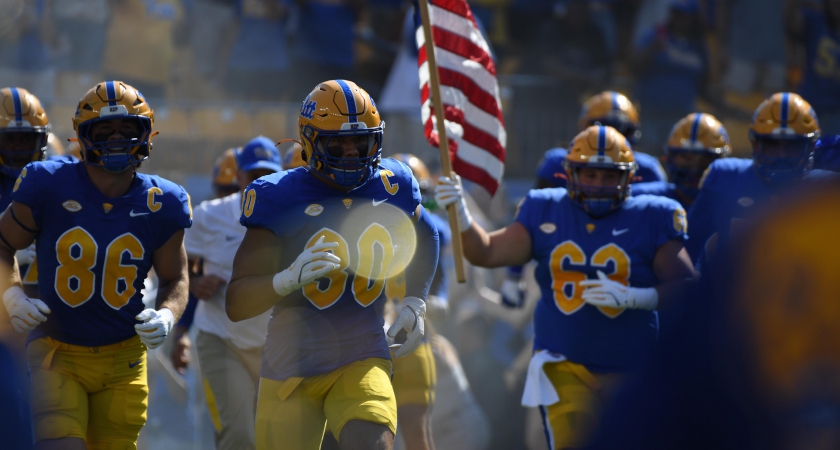

Associated Press
Sydney Moore and Sabrina Ootsburg were surrounded by hundreds of college athletes at AthleteCon when news broke that the $2.8 billion NCAA settlement had been approved by a federal judge. In a room full of college athletes, they felt like the only two people who understood the gravity of the situation.
“I’m about to get paid,” Moore said a Division I football player told her.
“Yes, you are about to get paid, and a lot of your women athlete friends are about to get cut,” she responded.
Moore acknowledged that her response might be a stretch, but the sprawling House settlement clears the way for college athletes to get a share of revenue directly from their schools and provides a lucky few a shot at long-term financial stability, it raises genuine concerns for others.
Schools that opt int will be able to share up to $20.5 million with their athletes over the next year starting July 1. The majority is expected to be spent on high-revenue generating sports, with most projections estimating 75% of funds will go toward football.
So what happens to the non-revenue-generating sports which, outside of football and basketball, is pretty much all of them?
It’s a query that’s top of mind for Ootsburg as she enters her senior year at Belmont, where she competes on track and field team.
“My initial thought was, is this good or bad? What does this mean for me? How does this affect me? But more importantly, in the bigger picture, how does it affect athletes as a whole?” Ootsburg said.
ADVERTISEMENT
“You look at the numbers where it says most of the revenue, up to 75% to 85%, will go toward football players. You understand it’s coming from the TV deals, but then it’s like, how does that affect you on the back end?” Ootsburg asked. “Let’s say 800k goes toward other athletes. Will they be able to afford other things like care, facilities, resources or even just snacks?”
Moore has similar concerns. She says most female athletes aren’t worried about how much – if any – money they’ll receive. They fear how changes could impact the student-athlete experience.
“A lot of us would much rather know that our resources and our experience as a student-athlete is going to stay the same, or possibly get better, rather than be given 3,000 dollars, but now I have to cover my meals, I have to pay for my insurance, I have to buy ankle braces because we don’t have any, and the athletic training room isn’t stocked,” Moore said over the weekend as news of Friday night’s settlement approval spread.
One of the biggest problems, Ootsburg and Moore said, is that athletes aren’t familiar with the changes. At AthleteCon in Charlotte, North Carolina, they said, perhaps the biggest change in college sports history was a push notification generally shrugged off by those directly impacted.
“Athletes do not know what’s happening,” Ootsburg said. “Talking to my teammates, it’s so new, and they see the headlines and they’re like, ‘Ok, cool, but is someone going to explain this?’ because they can read it, but then there’s so many underlying factors that go into this. This is a complex problem that you have to understand the nuances behind, and not every athlete truly does.”
Some coaches, too, are still trying to understand what’s coming.
Mike White, coach of the national champion Texas softball team, called it “the great unknown right now.”
“My athletic director, Chris Del Conte, said it’s like sailing out on a flat world and coming off the edge; we just don’t know what’s going to be out there yet, especially the way the landscape is changing,” he said at the Women’s College World Series in Oklahoma City. “Who knows what it’s going to be?”
Jake Rimmel got a crash course on the settlement in the fall of 2024, when he said he was cut from the Virginia Tech cross-country team alongside several other walk-ons. The topic held up the House case for weeks as the judge basically forced schools to give athletes cut in anticipation of approval a chance to play — they have to earn the spot, no guarantees — without counting against roster limits.
Rimmel packed up and moved back to his parents’ house in Purcellville, Virginia. For the past six months, he’s held on to a glimmer of hope that maybe he could return.
“The past six months have been very tough,” he said. “I’ve felt so alone through this, even though I wasn’t. I just felt like the whole world was out there – I would see teammates of mine and other people I knew just doing all of these things and still being part of a team. I felt like I was sidelined and on pause, while they’re continuing to do all these things.”
News that the settlement had been approved sent Rimmel looking for details.
“I didn’t see much about roster limits,” he said. “Everyone wants to talk about NIL and the revenue-sharing and I mean, that’s definitely a big piece of it, but I just didn’t see anything about the roster limits, and that’s obviously my biggest concern.”
The answer only presents more questions for Rimmel.
“We were hoping for more of a forced decision with the grandfathering, which now it’s only voluntary, so I’m a little skeptical of things because I have zero clue how schools are going to react to that,” Rimmel told The Associated Press.
Rimmel is still deciding what’s best for him, but echoed Moore and Ootsburg in saying that answers are not obvious: “I’m just hoping the schools can make the right decisions with things and have the best interest of the people who were cut.”
___
AP Sports Writer Cliff Brunt contributed.
___
AP college sports: https://apnews.com/hub/college-sports
recommended
The DBR wants your help! We are partnering with our good friends on the Duke Basketball Roundup podcast for a fun summer activity. It is a Duke fan survey to gauge everything from how you became a Duke fan, to your favorite Duke player, to your feelings about NIL and the transfer portal, and much, […]
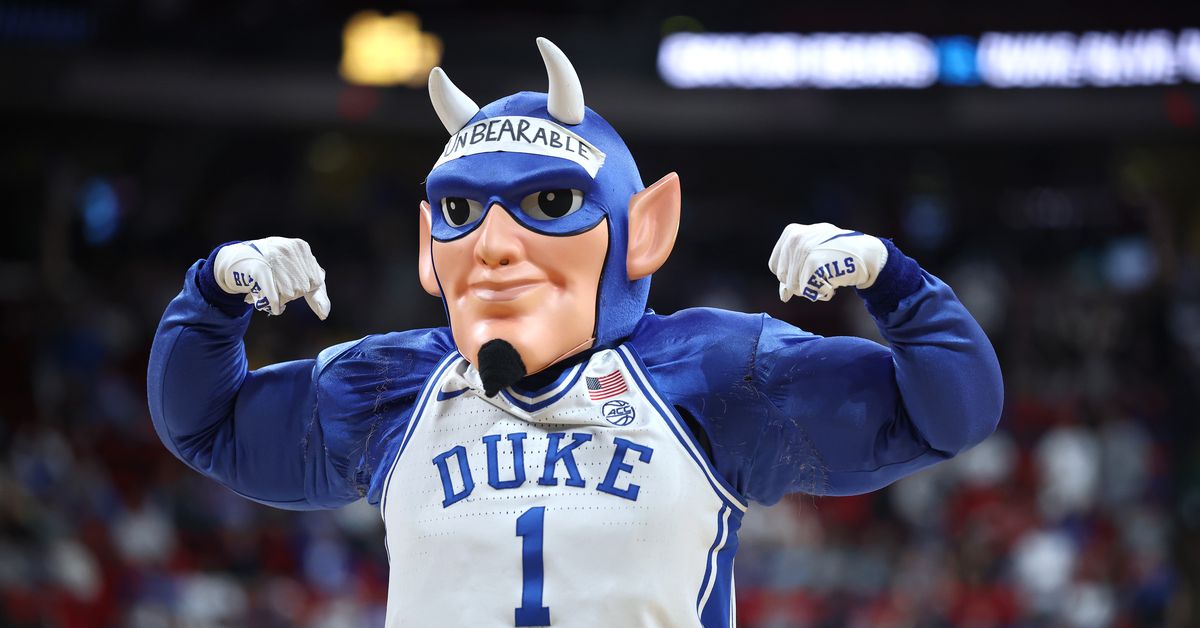
The DBR wants your help! We are partnering with our good friends on the Duke Basketball Roundup podcast for a fun summer activity. It is a Duke fan survey to gauge everything from how you became a Duke fan, to your favorite Duke player, to your feelings about NIL and the transfer portal, and much, much more.
It contains about 20 questions but shouldn’t take more than a few minutes to fill out. A word of advice — don’t ponder too much, go with your gut on each of these Qs.
The Duke Basketball Roundup will be revealing the answers on their podcast starting in a couple weeks and we will publish the results here too. This is a great way to talk about what we love about Duke and what maybe worries us too… And without you it won’t be complete.
So click here and tell us all about your relationship with Duke hoops!
To build long-term stability, IU coach Darian DeVries wants to ‘simplify’ the process Indiana basketball coach Darian DeFries describes how he see building long-term stability. BLOOMINGTON — Indiana basketball coach Darian DeVries basically had to start from scratch when putting together his roster for the 2025-26 season. The lone holdover from Mike Woodson’s final year as […]

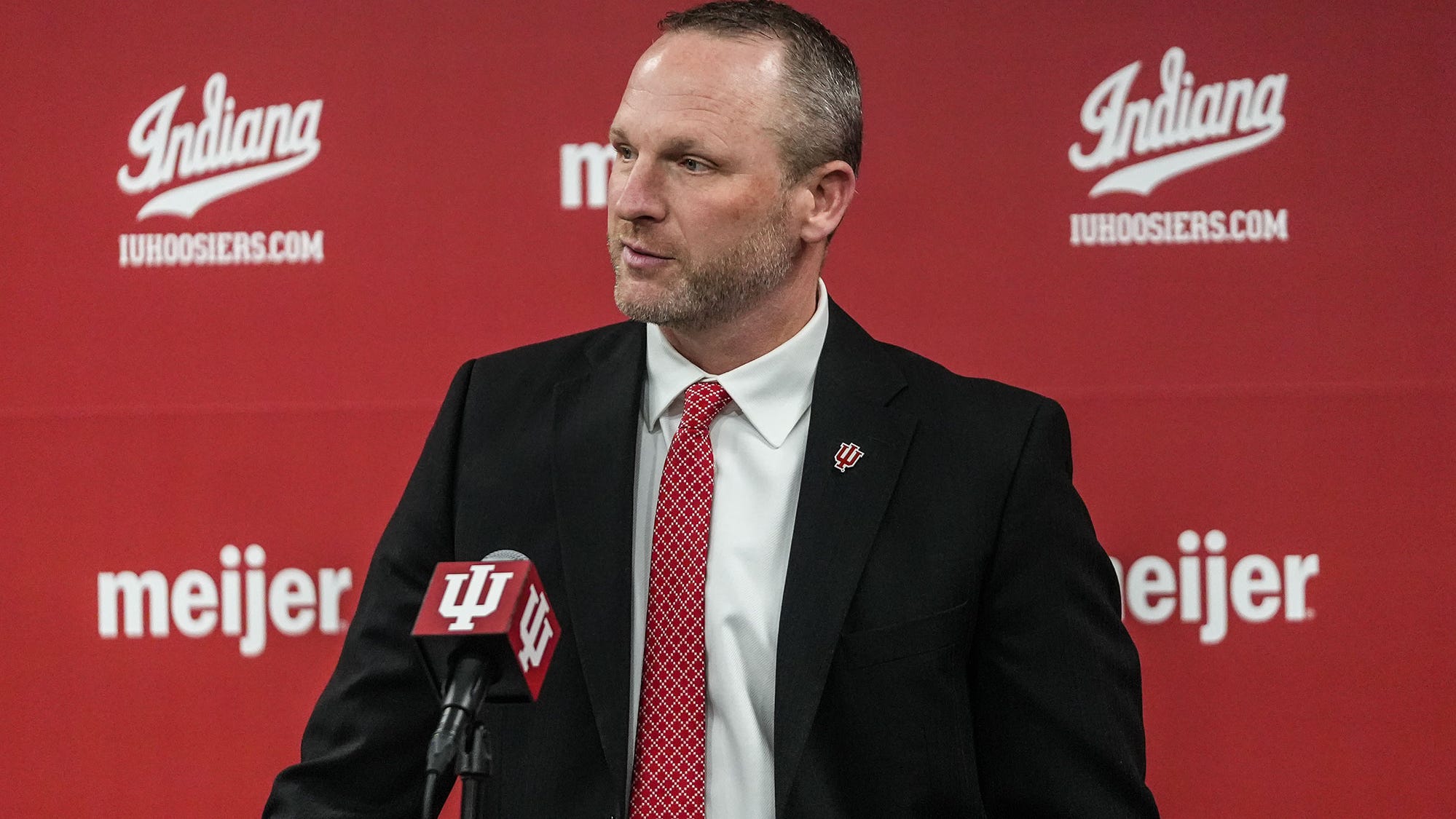
To build long-term stability, IU coach Darian DeVries wants to ‘simplify’ the process
Indiana basketball coach Darian DeFries describes how he see building long-term stability.
BLOOMINGTON — Indiana basketball coach Darian DeVries basically had to start from scratch when putting together his roster for the 2025-26 season.
The lone holdover from Mike Woodson’s final year as coach was a 2025 signee (Trent Sisley) who hadn’t even arrived on campus yet.
DeVries had plenty of experience with the process, having navigated similar rebuilds at Drake and West Virginia. Still, there was a noticeable difference this time around thanks to the House v. NCAA case that was finalized on Friday night.
The settlement in the case will usher in a new era of revenue sharing, along with an NIL clearinghouse that will vet deals. There was a rush to sign players to front-loaded NIL deals that weren’t subject to review before a final approval hearing back in April and that created a much different market than the one DeVries face during those previous rebuilds.
“I think the biggest thing, as everybody found out quickly, was the NIL piece jumped dramatically in terms of what rosters we’re going to take to kind of put together,” DeVries said at a recent booster event. “And thankfully, we’re at a place that was very supportive, and then have some great donors in place and people in place to help facilitate that.”
Those resources helped DeVries lock down 10 transfers, including three players (Tucker DeVries, Lamar Wilkerson and Reed Bailey) ranked in the top 100, per 247 Sports.
“We were able to adjust on the fly as we were putting together a roster,” DeVries said. “And then anytime you’re in the portal, those things can get a little tricky, as you’re trying to put that many guys on a roster at one time.”
It’s nothing new for Indiana — Woodson had a lucrative warchest after the 2023-24 season that helped him land some of the highest-rated players in the country. The school is also expected to be near the top of the conference in how much money from its anticipated $20.5 revenue-sharing budget it dedicates to men’s hoops.
“Just like last year, we’ll be highly competitive,” Indiana athletic director Scott Dolson said back in March. “Not just in our league, but nationally.”
That commitment came at a crucial time with IU facing stiff competition from teams across the country for top talent. Five other teams in the Big Ten (Iowa, Maryland, Minnesota, USC, and Washington) signed eight or more transfers.
Michael Niziolek is the Indiana beat reporter for The Bloomington Herald-Times. You can follow him on X @michaelniziolek and read all his coverage by clicking here.


Portal Update – Basketball and Gymnastics Take Hits


Portal Update – Basketball and Gymnastics Take Hits


Jon Jones answers UFC retirement speculation as fans accuse champion of 'holding the belt …


Xavier Legette taught Marty Smith his signature celly


2025 NCAA Softball Tournament Bracket: Women’s College World Series bracket, schedule set


NCDC Commitment Profiles: Cyclones’ Martins Moving On to Saint Anselm College • USPHL


IU basketball recruiting


Today in the MHSAA


Why IHOP Rode With Dale Earnhardt Jr. In Amazon NASCAR Debut


Former Alabama QB Trusts Nick Saban to ‘Save College Football’ on New NIL Commission